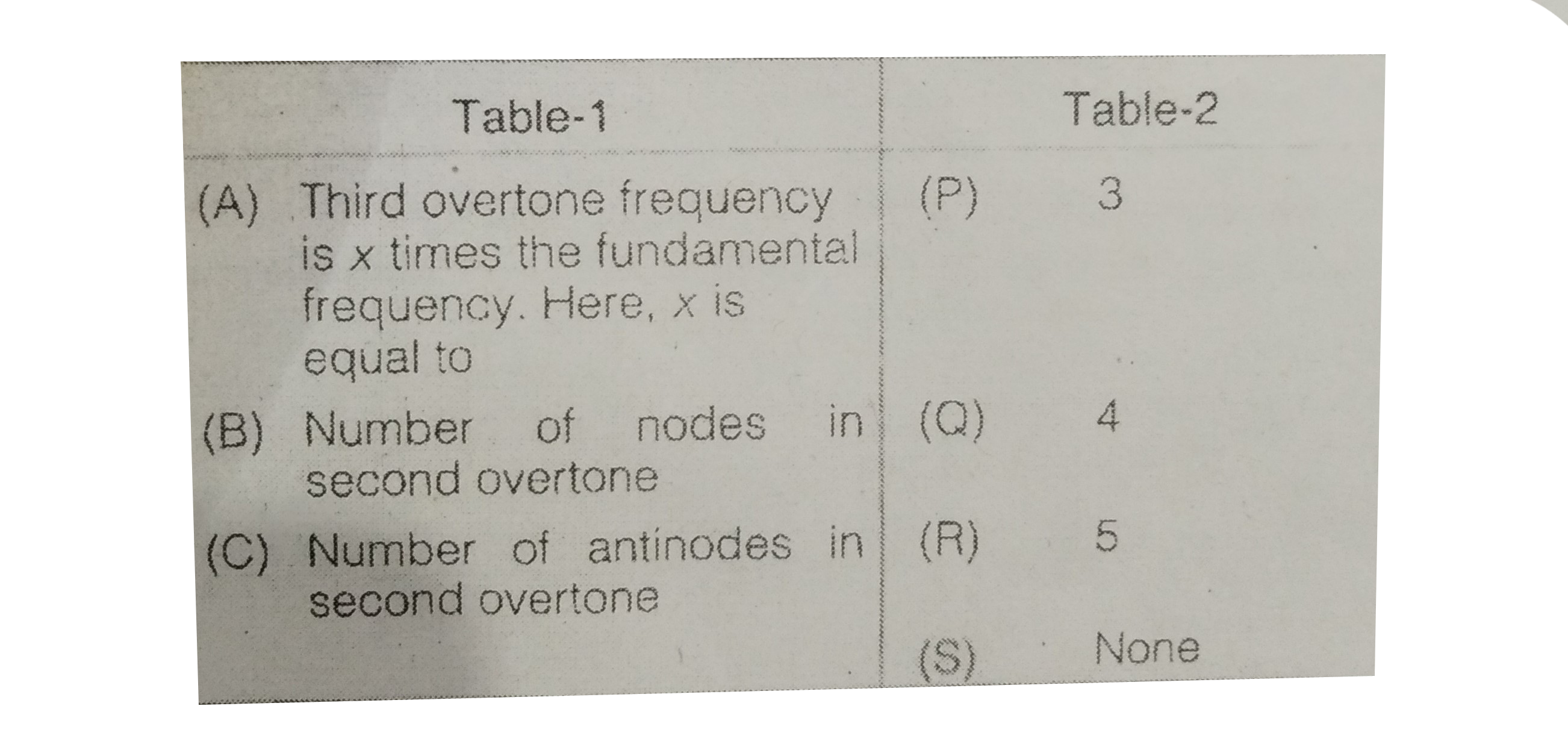Regarding an open organ pipe , which of the following is correct?
Both the ends are pressure antinodes
Both the ends are displacement nodes
Both the ends are pressure nodes
Both (a) and (b)
The correct Answer is:C
To solve the question regarding the characteristics of an open organ pipe, we will analyze the properties of sound waves in such a pipe. An open organ pipe is characterized by having both ends open, which affects the displacement and pressure nodes and antinodes.
1. Understanding Open Organ Pipes:
- An open organ pipe has both ends open to the air. This means that at both ends, the air can move freely.
Hint: Remember that the ends of an open pipe are points where the air can vibrate freely.
2. Displacement Nodes and Antinodes:
- In terms of displacement, the open ends of the pipe are displacement antinodes. This means that at these points, the displacement of the air particles is at its maximum.
Hint: Displacement antinodes occur where the air moves the most, which is at the open ends of the pipe.
3. Pressure Nodes and Antinodes:
- Conversely, at the open ends, there are pressure nodes. This means that the pressure variation is minimal at these points, as the air can freely move in and out.
Hint: Pressure nodes occur where the pressure does not change significantly, which is at the open ends of the pipe.
4. Analyzing the Options:
- Option 1: Both ends are pressure antinodes. This is incorrect because both ends are pressure nodes.
- Option 2: Both ends are displacement nodes. This is incorrect because both ends are displacement antinodes.
- Option 3: Both ends are pressure nodes. This is correct as we established that both ends are indeed pressure nodes.
- Option 4: Both A and B. This is incorrect since both A and B are false.
5. Conclusion:
- The correct option is Option 3, which states that both ends are pressure nodes.
Final Answer:
The correct statement regarding an open organ pipe is that both ends are pressure nodes (Option 3).
- An open organ pipe has both ends open to the air. This means that at both ends, the air can move freely.
- In terms of displacement, the open ends of the pipe are displacement antinodes. This means that at these points, the displacement of the air particles is at its maximum.
- Conversely, at the open ends, there are pressure nodes. This means that the pressure variation is minimal at these points, as the air can freely move in and out.
- Option 1: Both ends are pressure antinodes. This is incorrect because both ends are pressure nodes.
- Option 2: Both ends are displacement nodes. This is incorrect because both ends are displacement antinodes.
- Option 3: Both ends are pressure nodes. This is correct as we established that both ends are indeed pressure nodes.
- Option 4: Both A and B. This is incorrect since both A and B are false.
- The correct option is Option 3, which states that both ends are pressure nodes.
The correct statement regarding an open organ pipe is that both ends are pressure nodes (Option 3).
Topper's Solved these Questions
- SUPERPOSITION AND STANDING WAVESBOOK - CENGAGE PHYSICS ENGLISHCHAPTER - SUPERPOSITION AND STANDING WAVESEXERCISE - Multiple
26 Videos
- SUPERPOSITION AND STANDING WAVESBOOK - CENGAGE PHYSICS ENGLISHCHAPTER - SUPERPOSITION AND STANDING WAVESEXERCISE - Assertion - Reasoning
6 Videos
- SUPERPOSITION AND STANDING WAVESBOOK - CENGAGE PHYSICS ENGLISHCHAPTER - SUPERPOSITION AND STANDING WAVESEXERCISE - Subjective
24 Videos
- SOUND WAVES AND DOPPLER EFFECTBOOK - CENGAGE PHYSICS ENGLISHCHAPTER - SOUND WAVES AND DOPPLER EFFECTEXERCISE - Integer
16 Videos
- THERMODYNAMICSBOOK - CENGAGE PHYSICS ENGLISHCHAPTER - THERMODYNAMICSEXERCISE - 24
1 Videos
Similar Questions
Knowledge Check
Which of the following is correct regarding jaundice?
ASkin turns yellowBEues turn yellowCLiver gets affectedDAll of these
Third overtone of a closed organ pipe is in unison with fourth harmonic of an open organ pipe . Find the ratio of the lengths of the pipes.
View SolutionThe first overtone of an open organ pipe beats with the first overtone of a closed organ pipe with a beat frequency 2.2Hz . The fundamental frequency of the closed organ pipe is 110Hz, find the lengths of the pipes . Take velocity of sound =330m/s.
View SolutionWhich of the following is correct regarding diastema
View SolutionWhich of the following is correct regarding viscosity?
View SolutionThe 4th overtone of an open organ pipe resonates with the first overtone of semi-open organ pipe. The ration of the length of the open pipe to the semi-open pipe is
View SolutionThe fundamental frequency of an open organ pipe is same as that of the first overtone frequency of a closed organ pipe. If the length of open organ pipe is 100 cm then length of closed pipe is
View SolutionThe fundamental frequency of a closed organ pipe is equal to the first overtone frequency of an open organ pipe. If the length of the open pipe is 60 cm, what is the length closed pipe?
View Solution

